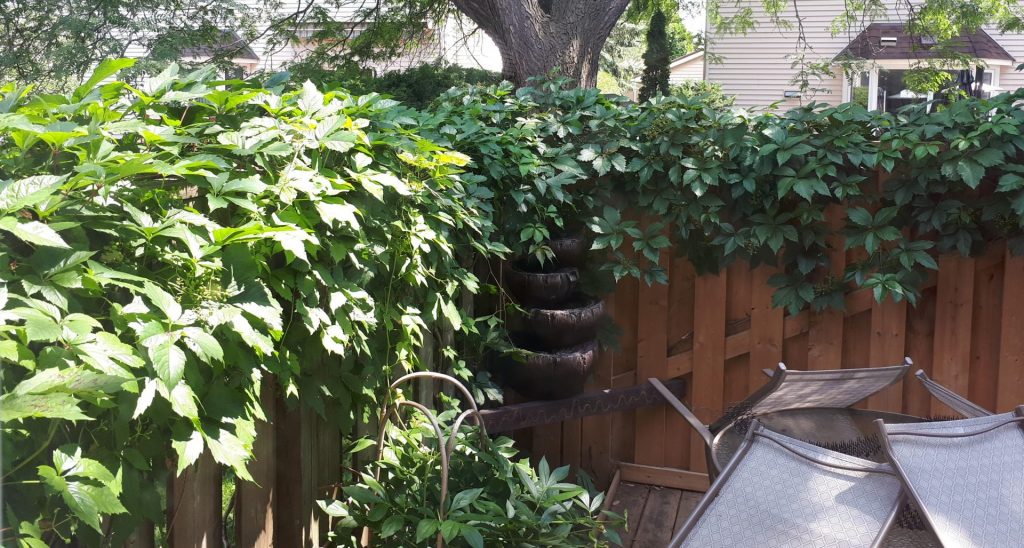
Hello,
This is a condominium townhouse and I’ve enjoyed growing vine on the fence since we moved in (2014).
The management office has recently requested to remove the entire vine. Which was all of sudden and made us upset.
– “During inspections it was noted that you have a large vine growing on the common element fence the condo is responsible for. You may not be aware but vines growing on wood fences can prematurely rot the wood by holding the moisture. Furthermore, the vines impeded the corporation from fulfilling their responsibility to maintain common elements, the contractor was unable to stain the fence. You are requested to remove the vines from the common element portion of the fence within 30 days or the corporation will remove and charge back the expense. “
Thank you for contacting Toronto Master Gardeners about this problem. While we certainly understand your disappointment with the sudden request to remove the vine, we are hoping that we can not only put the management’s request in perspective, but also suggest some next steps as you consider alternatives to this plant.
The vine that is growing on your fence that provides welcome privacy and a lush green backdrop is Virginia creeper or Parthenocissus quinquefolia. A deciduous woody vine that is native to North America, this plant is popular for many reasons—its vigorous growth, its excellent fall colour, blue berries that attracts birds, and that it supports itself without needing to be tied against a trellis. However, these very characteristics also create problems like those identified by your property management. Virginia creeper is an aggressive grower climbing 15–20 m, and will quickly cover not only the objects you want it to cover such as a fence, but also objects you do not want it to cover such as trees, a neighbours’ property, and overhead wires. It is considered invasive in the UK, Europe, and China. In Toronto, it self-seeds readily (or the seeds are dispersed by birds) so it can become weedy in our ravines and landscaped areas.
Virginia creeper attaches itself to a fence with sucker disks located at the end of their tendrils. Once attached to the side of a building or home, it becomes difficult to remove and will damage painted surfaces and leave residues. Your property managers are correct when they note that the the robust growth of this vine prevents trades’ access to the fence and to utility services that they may need to work on along townhouse property lines. Unfortunately, in circumstances in which a property management firm is responsible for a group of houses, residents are obligated to follow what are perhaps stricter standards than you may find elsewhere.
Once you remove this vine, you may wish to plant alternatives in its place. However, we strongly recommend that you consult the property management about their policy concerning appropriate plants. For example, if you plant a coniferous shrub like a yew or a deciduous shrub like a hydrangea, they will still impede access to the fence. During the summer, you will encounter the same problem with some of the taller or bushier herbaceous perennials like coneflower (Echinacea) or black-eyed Susan (Rudbeckia). Shorter perennials may be possible such as geranium, salvia, bleeding heart, or lady’s mantle. There are many possibilities depending on your sun and soil conditions (not shown in your photograph). But it is premature to make any gardening decisions until you clarify the specific restrictions affecting the height, spread, and growth habits of any vines, trees, woody shrubs, or herbaceous perennials you would like to plant on your property.

